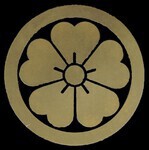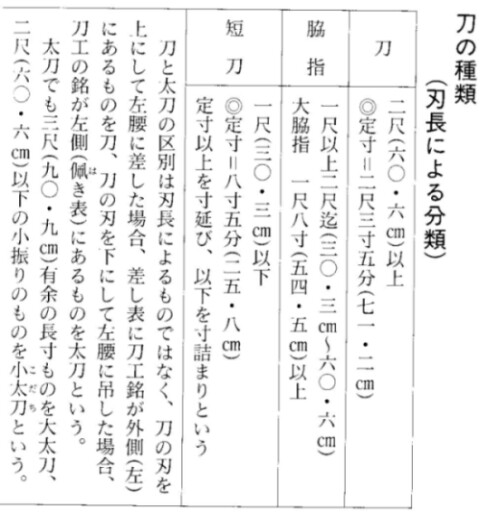-
Posts
3,242 -
Joined
-
Days Won
99
Everything posted by Guido
-

The DTI and IV NMB party 26th October 2007.
Guido replied to Henry Wilson's topic in General Nihonto Related Discussion
P.S.: Not only unflattering (well, what do you expect after retail-sized bottles of beer and saké), but I just realized that Bob has a leprechaun sized Gordon Robson hanging on to his back! :lol: -

The DTI and IV NMB party 26th October 2007.
Guido replied to Henry Wilson's topic in General Nihonto Related Discussion
Henry, thanks for the kudos, and for taking the time to write up on the DTI and the party. A very informative and witty post (as usual) for those who weren't there, and hilarious for those who were! In that light I'll even forgive you the unflattering (to all three of us) photo. But I wonder why my leprechaun story still haunts you .... *** As Henry already mentioned, we had quite a few scholars, high-end collectors, craftsmen and artists from all over the world among the guests, and some of them prefer to remain anonymous. In any case, here are two more pics (also courtesy of Henry who mailed them to me): guess the names (or identify yourself)! -
Katana: more than two Shaku, Teisun = 2 shaku 3 Sun 5 Bu Wakizashi: more than one and less than two Shaku Ô-Wakizashi: over 1 Shaku 8 Sun Tantô: less than one Shaku, Teisun 8 Sun 5 Bu Sunnobi-tantô: longer than Teisun Sunzumari-tantô: less than Teisun "Teisun" cold be translated with "standard length". "Ô-Tantô" or "Ko-Wakizashi" are not terms I ever heard in Japan.
-
-
http://www.bushidojapaneseswords.com/Den%20article.htm
-
I thought that my question about where the NMB is going would be understood as being rhetorical - the way it was meant. Obviously not, and so I apologize for my poor choice of words. Frankly, I'm tired. Tired of people who partially read "The Samurai Sword", and thumbed through "The Connoisseur's Book", thinking this is the same as dedicating decades of one's life to the study of Nihontô. Yes, there are people who study Nihontô for many years and never will understand their essence, and there are a few who achieve impressive knowledge in a few years. But I'm tired of people with a half-knowledge, who think the easiest way to impress others is to criticize, who even go through posts and look for typos because it's the only meaningful contribution they can come up with. I'm loosing my patience, and that is not good. But after all this is my problem, not that of the NMB, and I'll stop giving Brian, who does a great job, grief. As Chief Joseph said: "From where the sun now stands, I will fight no more forever." I'm not running from anything, just wishing everyone good luck on my way out.
-
Kiyomaro started signing Nijimei in Kaei 3 (1850). He usually dated his work, and since this Tantô lacks a Nenki, I assume it was made in Kaei 4 - that year he avoided dating because of the "unlucky number 4" (if he put a date on a blade that year at all, he used the Eto, i.e. "year of the boar, metal elder brother".
-
The younger a sword, the harder it is to get papers for it. For example, an Ô-Suriage Muromachi period sword will only go as high as TokuHo, and an Ô-Suriage Shintô only will make Hozon as a general rule. A Shinshintô basically has to be in pristine condition - besides, of course, being considered of the highest level of art - in order to make Jûyô. I've seen many outstanding blades by Shintô and Shinshintô smiths that are Machi-okuri, have a tiny Mune-ware, or a couple of added Mekugi-ana, and therefore never will make Jûyô. A collector who isn't too crazy about papers, and confident in his abilities to judge a sword purely by its artistic merits, can form a fine collection at bargain prices. Many (most?) swords by Taikei Naotane, Suishinshi Masahide, Sa Yukihide and Minamoto Kiyomaro, to name but a few, have "only" TokuHo papers. They're simply "too young".
-
I never have problems with educated opinions; I also have no problems with discussing matters of taste. If educated opinions are voiced, we all can learn from them. If people tell us *why* they see a lack of quality, we all can learn from it - maybe we don’t agree, but that doesn’t matter. If people tell us how certain blades by the same smith differ in artistic merit, we all can learn from it. If people explain or give an opinion on why they perceive certain smiths’ work as superior or inferior, we all can learn from it. Calling a work by a smith who’s considered a genius by most professionals and educated collectors “underwhelming†begs the question of what makes it inferior, and why it is overpriced. What hands-on experience and market study enables one to make such an authoritative statement? How about “Judging by the weak outlay of the Hamon, and lack of Sunagashi, it appears to be made around Kaei when there was more alcohol than blood in his veins. I came to this conclusion after taking every opportunity to examine his swordsâ€. Not that I’m saying this is the case here, but we would have a *real* opinion we could discuss and learn from. But calling the blade sub-standard only for the sake of being confrontational is not very profound. If my point of view makes me appearing jaded, so be it. I’d rather be called “jaded†than “ignorantâ€. I’m not sure anymore what NMB is all about; not about learning, it seems. Maybe it should be renamed “Samurai Sword Opinion Boardâ€, with an explanation in bold letters that all opinions are equal. And a special moderator will be assigned to comfort whiners.
-
BTW, this is the sword I mentioned earlier: http://samurai-nippon.net/osusume/.
-
Erol, you're right, some of them have so much Nie it seems you could read them like Braille ... Yup, pity I couldn't make it that day, but I handled quite a few Kiyomaro in the past, the last time actually last week at a sales exibition. A Katana, slightly Suriage (which the price reflected, "only" Yen 23 million), signed Minamoto Masayuki, TokuHo. It wasn't the first, and hopefully not the last Kiyomaro I held in my sweaty fingers. Almost exactly one year ago, I combined a trip to an Izu hot spring resort with a visit to the Sano museum (actually it was the other way around, but that's how I sold it to my wife). There they had the Kotetsu and Kiyomaro exhibition, with all the swords only inches from you away, all 35 Kiyomaro and all 35 Kotetsu. Besides the fact that I had to stare at a blank sheet of paper for half an hour after that, just to re-boot my brain after the sensory overload, I found very interesting what my wife had to say: not being interested in swords, and knowing next to nothing about them, she was quite taken with the Kiyomaro blades (Kotetsu "didn't do it" for her). Not only the grand Sugata, but how they "shine from within". The first time she wasn't bored being dragged into a sword exhibition by me. Now, if even my sword-knowledge-impaired (Japanese) wife enjoyed the Kiyomaro blades, how wet do you think my pants were? I don't hold it against anyone who doesn't have access to art swords (or doesn't want to bother to go the extra mile to do so), but some of the discussions here remind me of the following fable:
-
Wow, what you guys see in a low-res pic and Oshigata is quite impressive! All those of you (except Darcy) who actually came nearer than a mile to a Kiyomaro blade -*any* Kiyomaro - raise their hands, please!
-
The NBTHK is lagging behind since the number of items put before the Shinsa is steadily increasing. The results for the January Shinsa were out in April, and the papers sent last week - that's more than 5 months!
-
From what I heard, the Mei is often hard to read because the Tsuba were put back into the fire after they were finished, giving them that typical, "molten" look.
-
After 山吉兵 (Yamakichibei) there's a へ (he) added, thus transforming the reading into 山吉兵衛 (Yamakichibê). That's all she wrote.
-
Aoi Art - Mr. Tsuruta - defines it like anyone else who's familiar with the terminology; *all* Japanese dealers / museums / collectors / books etc. use the following terms: Hachô 刃長, Nagasa 長さ, Hanagasa 刃長さ, Uwami no Nagasa 上身の長さ = length measured from the Munemachi to the Kissakisaki in a straight line. In English translations usually referred to as "blade length". Zenchô 全長 = overall (entire) length, hardly ever used. Nakago no Nagasa 茎の長さ, the length of the tang, is almost never mentioned since it's of no real concern. What *is* important is its shape and length in relation to the blade itself. If the length of the Nakago is, for whatever reason, really important to you, print out a pic of the entire blade, and use a ruler to calculate it. Or simply shoot the seller an e-mail.
-

Gassan (or rather not) on eBay?
Guido replied to Marius's topic in Auctions and Online Sales or Sellers
It looks legit to me, but not very old, and *extremely* Hadatatsu. I think the polishing (including a few spritzers of acid) is mostly responsible for its "unreal" appearance. Shame on you, you didn't read my article (see link above)! Next time you come to Japan, I'll only buy you booze and semi-dead sea creatures if you know it by heart!!! -

Gassan (or rather not) on eBay?
Guido replied to Marius's topic in Auctions and Online Sales or Sellers
Actually small sections along the edge of a block of Masame steel are punched out, on both sides and alternating, and after that the block is "compressed" by hammering. I hope my description makes sense ... :? -

Gassan (or rather not) on eBay?
Guido replied to Marius's topic in Auctions and Online Sales or Sellers
Blades under 15 cm (5.9 inches) don't have to be registered. http://www.nihontokanjipages.com/japanese_sword_laws.html The seller states that the Tantô is 15.3 cm, it therefore *should* have a registration card. -
That's not really neccessary, although it does help now and then . Anyhow, my reply was not really directed at you ...
-
For the terminologically challenged, a look at the Japanese page brings all the enlightenment you're seeking so desperately: 刃長, commonly translated as "blade length". Revealing even more secrets , it actually means the length from the Munemachi to the very tip of the sword in a straight line. Amazing, isn't it?
-
Paul and I ran into each other here in Tôkyô on a couple of occasions, and he's also a NMB member. He seems to be a nice guy, and I know from personal experience that journalists tend to quote out of context. In any case, the "heavenly mission" thing was simply to good to pass upon ... 62 views in under 4 hours ...
-
I know. Sad story. Metropolis told me that they can't report about my traditional art, mostly because a) I had a bad hair day when they wanted to take a picture for the article, and b) their magazin is also read by minors ...
-
http://metropolis.co.jp/tokyo/recent/feature.asp






